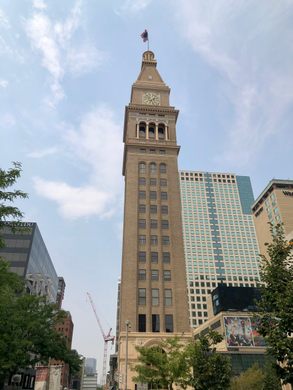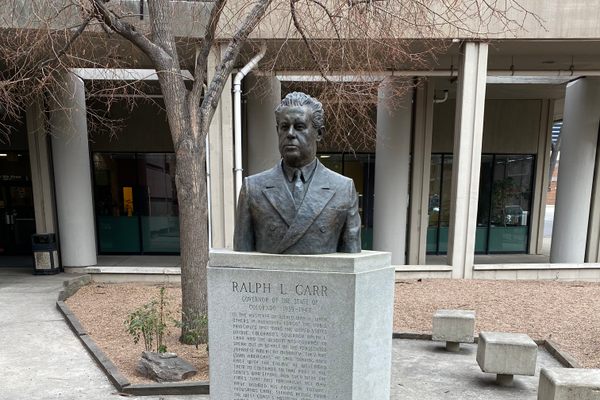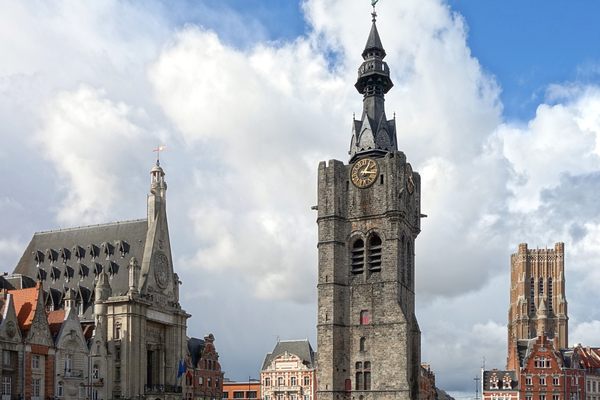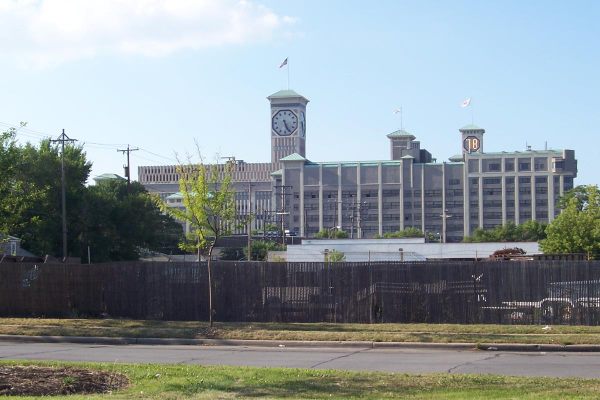Daniels and Fisher Tower
A focal point of in Denver’s skyline for over a century, inspired by a Venetian basilica.
A replica of the Campanile di San Marco (St. Mark’s Bell Tower) in Venice, this historic tower was built in 1911, and was the tallest building on the Denver skyline until the 1950s. At 375 feet above street level, it was the tallest building west of the Mississippi River for a time.
The building was commissioned by William Cooke Daniels, whose name adorns the 16th street entrance. It was built as part of an expansion of the original store in Denver’s prime shopping district. Daniels had spent significant time in Europe and wanted to build something monumental to draw people to his store, and the tower was meant to serve as the main entrance.
The tower was designed by local architect Frederick Sterner, and was based on the bell tower at St. Mark’s Basilica in Venice, which had collapsed in 1902. The original tower was being rebuilt at the same time as the Daniels tower was going up for the first time. In a show of one-upmanship, Daniels decided to build his tower a few feet taller, prompting the Denver Times to joke that the Venice tower was a replica of the Denver tower instead of the other way around.
The original Daniels and Fisher department store had 400,000 square feet (nine acres) of space, making it the largest store in Denver. The tower served as managerial offices, an infirmary, lounge, lunchroom and an in-house school. There was also an observation deck on the 20th floor that drew a steady stream of tourists.
During the late 1940s and early 1950s, Daniels and Fisher experienced a decline in sales and quickly moved out of commercial favor as the main retail district moved away from 16th street. In 1958, the store was sold and moved, leaving a vacant space behind.
In 1967, the Denver Urban Renewal Authority’s Skyline Urban Renewal Project was approved. The plans for this undertaking entailed the demolition of most of downtown including the Daniels and Fisher building. Denver’s preservationist society enacted a last ditch effort to save the tower, which was declared a landmark and listed on the National Register of Historic Places. Though the tower was spared, the rest of the building was not—it demolished in 1971.
In 1980, a developer purchased the building for $72,000 with the intent of turning it into condominiums. After $3.5 million in renovations, the interior had been upgraded into office units but the tower’s exterior was still in poor shape.
The tenants of the building bankrolled an extensive renovation effort in the 1990s, and every major part of the building was restored over the course of the decade and a half. Today, the tower houses office condominiums and an event space on the upper floors. The Seth Thomas clock is still visible on all four sides of the tower and has been completely restored.
Know Before You Go
The tower is located in the middle of the 16th Street Mall. You can take a free bus to move up and down the street with ease. During the month of April the observation deck is open to visitors as part of "Doors Open Denver". There is a cabaret in the basement.


































Follow us on Twitter to get the latest on the world's hidden wonders.
Like us on Facebook to get the latest on the world's hidden wonders.
Follow us on Twitter Like us on Facebook